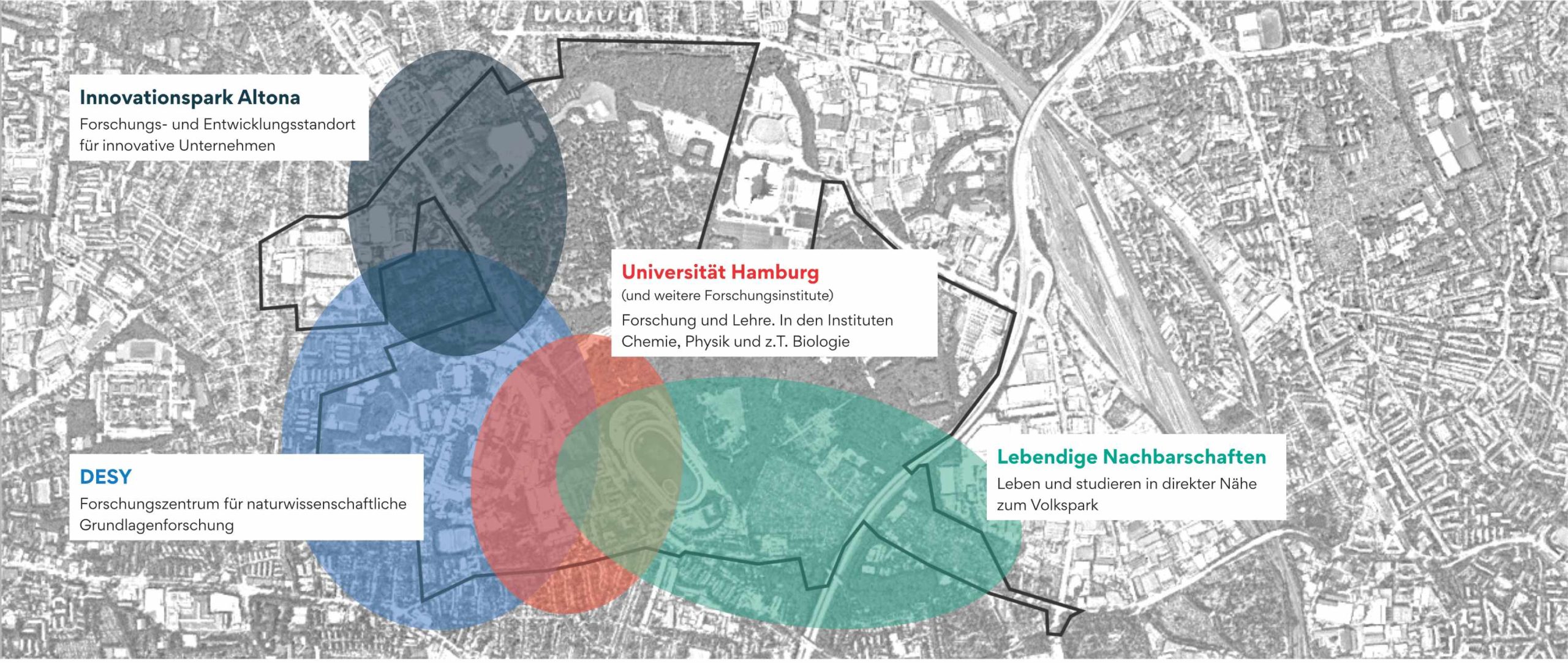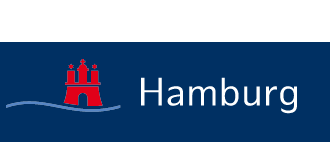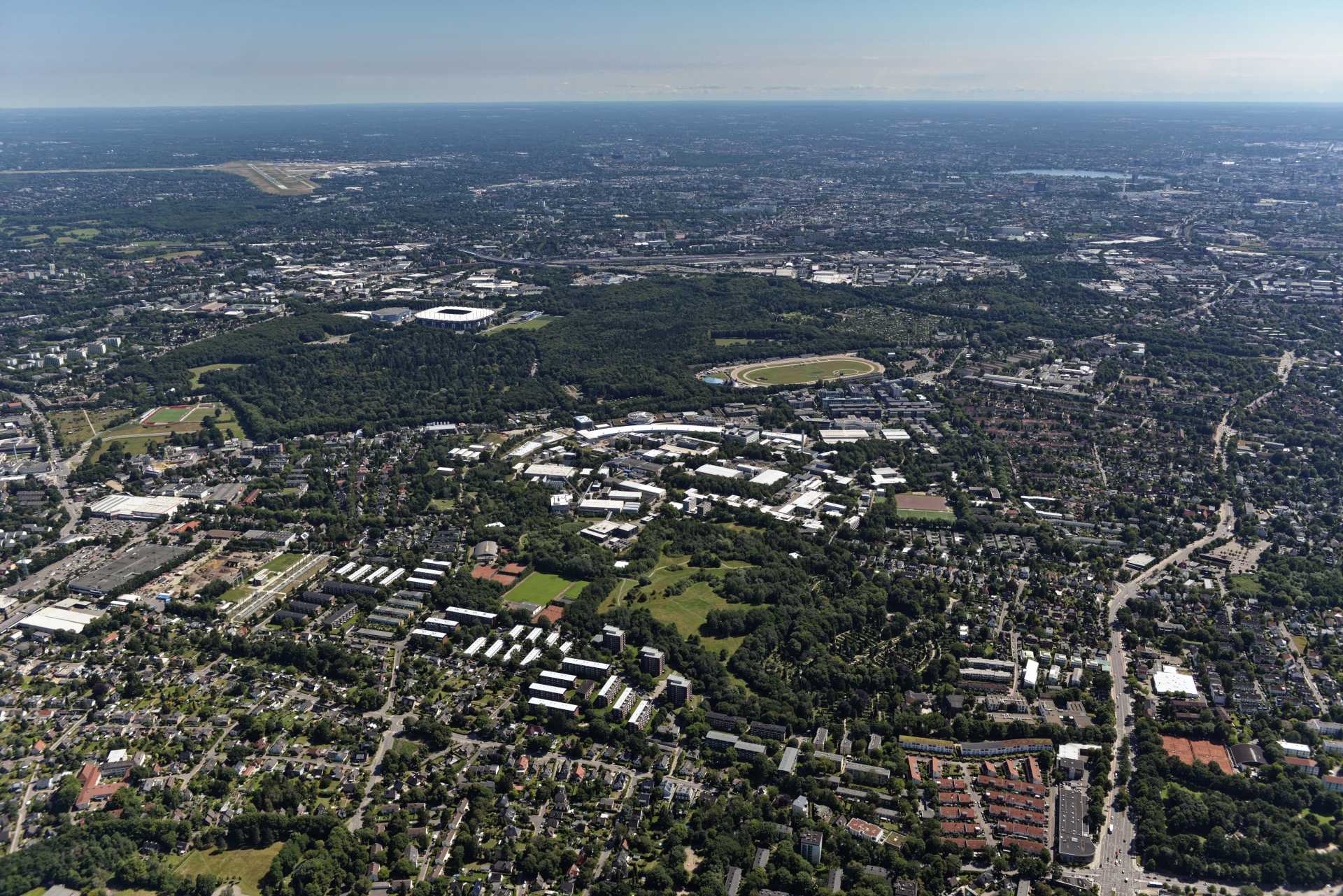
Science City: Knowledge puts down urban roots
Reciting behind thick monastery walls, studying in a secluded alma mater – the transition from an industrial to a knowledge-based society finally paved the way for science to move into the center of society. The proverbial ivory tower and science based in the monasteries are things of the past, while the city campus has become a reality. What’s more, universities are becoming increasingly enmeshed with their urban environments and are themselves becoming factors in urban development. Through targeted impulses and clever placement, research institutions and universities are being supplemented by private institutes, innovative start-ups and social neighborhood development projects. Participating companies implement the knowledge generated, promote the potential of the innovators and support the overall process by funding research and teaching. This creates integrated places of knowledge, living and working that give cities further potential for the future.
Just such a driver is currently being created in Hamburg’s west. Located directly at Volkspark Altona, Science City Hamburg Bahrenfeld combines top international research, university education and innovative companies with lively residential quarters. In addition to world-class science, the new 125-hectare urban space will also offer thousands of new apartments, sports, leisure and shopping facilities, as well as social meeting spaces – facilities that will benefit the immediate surroundings as well as Hamburg as a whole.
The idea behind Science City
The vision for the future of Science City presented in 2019 depicts a vibrant Science City directly adjacent to Hamburg’s largest public park, the Altona Volkspark. Several sub-areas flow into each other in terms of space and content and form an overall space: a main scientific development area around the DESY accelerator center, large parts of the University of Hamburg as well as renowned institutes, an innovation and technology center and a lively mixed-use neighborhood with a residential focus.
In terms of content, the renowned DESY campus retains a basic research focus, but opens up to the surrounding area and dovetails further with newly established areas of the University of Hamburg. The latter is relocating almost its entire excellence cluster with the faculties of chemistry and physics as well as several biology institutes to Science City Hamburg Bahrenfeld. In the future, several thousand students and scientists will find excellent, internationally attractive conditions for studying, teaching and living here.
Connected to this is a multi-level innovation and technology infrastructure: research-based start-ups and small and medium-sized enterprises can work in a specially tailored environment with scientific ties, interacting closely with the start-up scene that is emerging there. These are ideal conditions for transferring new technologies and bringing them to market.
Finally, the “Quartiere am Volkspark” are being built right next to the green Volkspark, where an outdated harness racing track and the A7 freeway still spread noise and urban dreariness. This is being made possible by roofing over the freeway and relocating the harness racing track to Hamburg’s Horn district. With around 3,800 new apartments, scientific facilities, service and retail offerings, two schools, sports and play facilities, and central public meeting places and squares, a vibrant hub is being created for Science City.
The entire area is linked by new infrastructure, multicoded open spaces and the connection of new living and working worlds with the existing neighborhood environments of Bahrenfeld and Lurup districts. People and institutions in the surrounding area are actively involved in the entire process and have been participating intensively in the overall development from an early stage.
The first developments are already visible today. Completed to date are:
- the Light & Schools, a University of Hamburg physics teaching laboratory on the Science Campus Bahrenfeld was completed in 2019 and is a first visible building block
- HARBOR (Hamburg Advanced Research Centre for Bioorganic Chemistry), has been closing the gap between physics and life sciences on the science campus since 2020.
- the Start up-Labs, an incubator for start-ups from research with a physics or bio-physics background, were completed in 2021
- the Centre for X-Ray and Nano Science CXNS on the DESY research campus, an interdisciplinary, multi-institutional platform for research with X-ray light in combination with nano- and material sciences, was opened in 2022
Currently being implemented are:
- a Learning Center for students of the University of Hamburg in the building complex at Albert-Einstein-Ring 17-21. A feasibility study was commissioned in 2021
- the tecHHub, a planned center for start-ups and research in the innovation park. Realization: from 2022
- the DESY Innovation Factory I&II will become a center for start-ups, bridging research and new ideas in the fields of life sciences and new materials by 2025. The architecture was presented 2022.
- In 2022, an urban and open space planning competition will be held for the areas of the current harness racing track and the allotments south of Schulgartenweg and Holstenkamp (“Quartiere am Volkspark”).
- the Hamburg Fundamental Interactions Laboratory (HAFUN) will be the new home for nine physics research groups. The architectural competition for the building is currently underway.
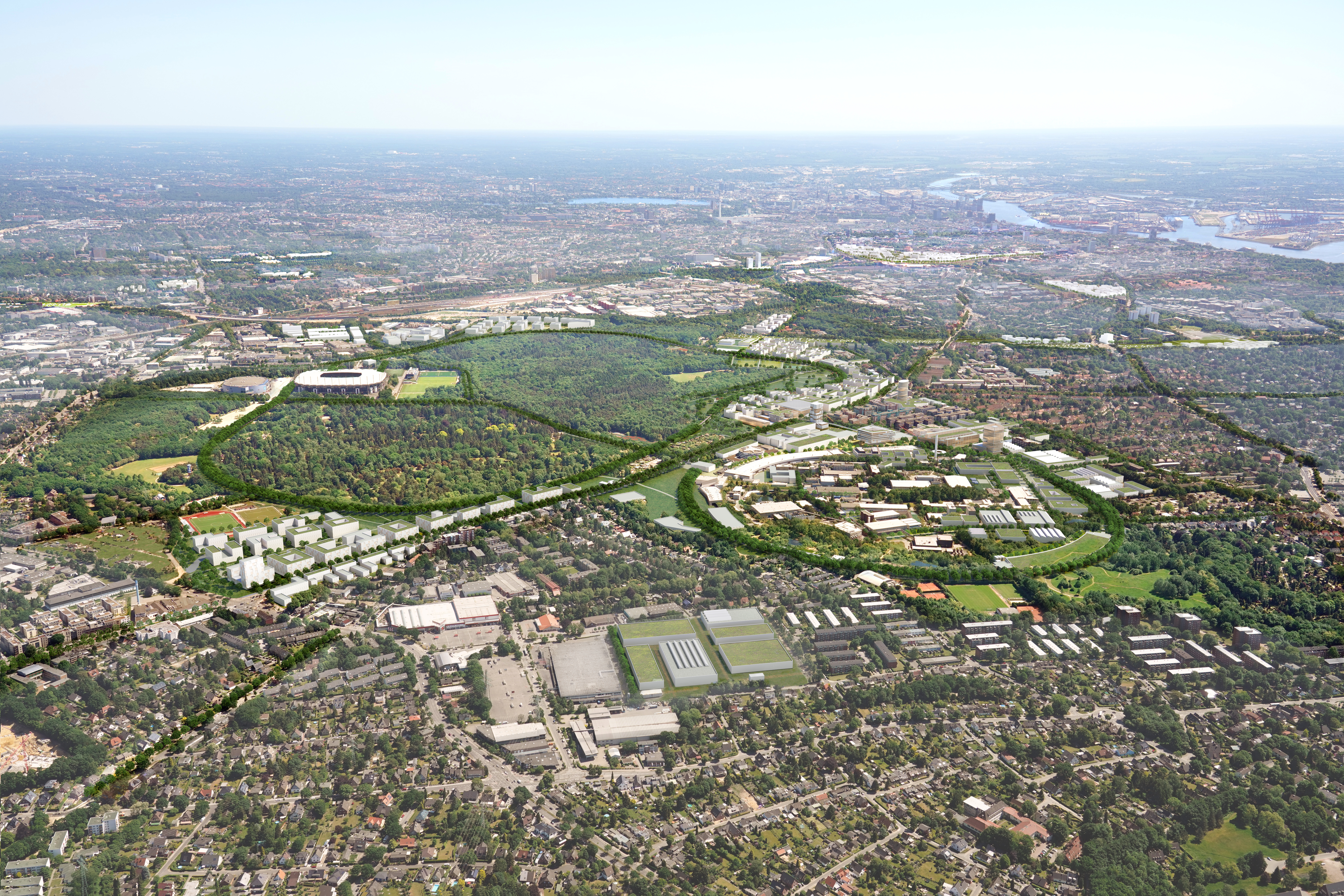
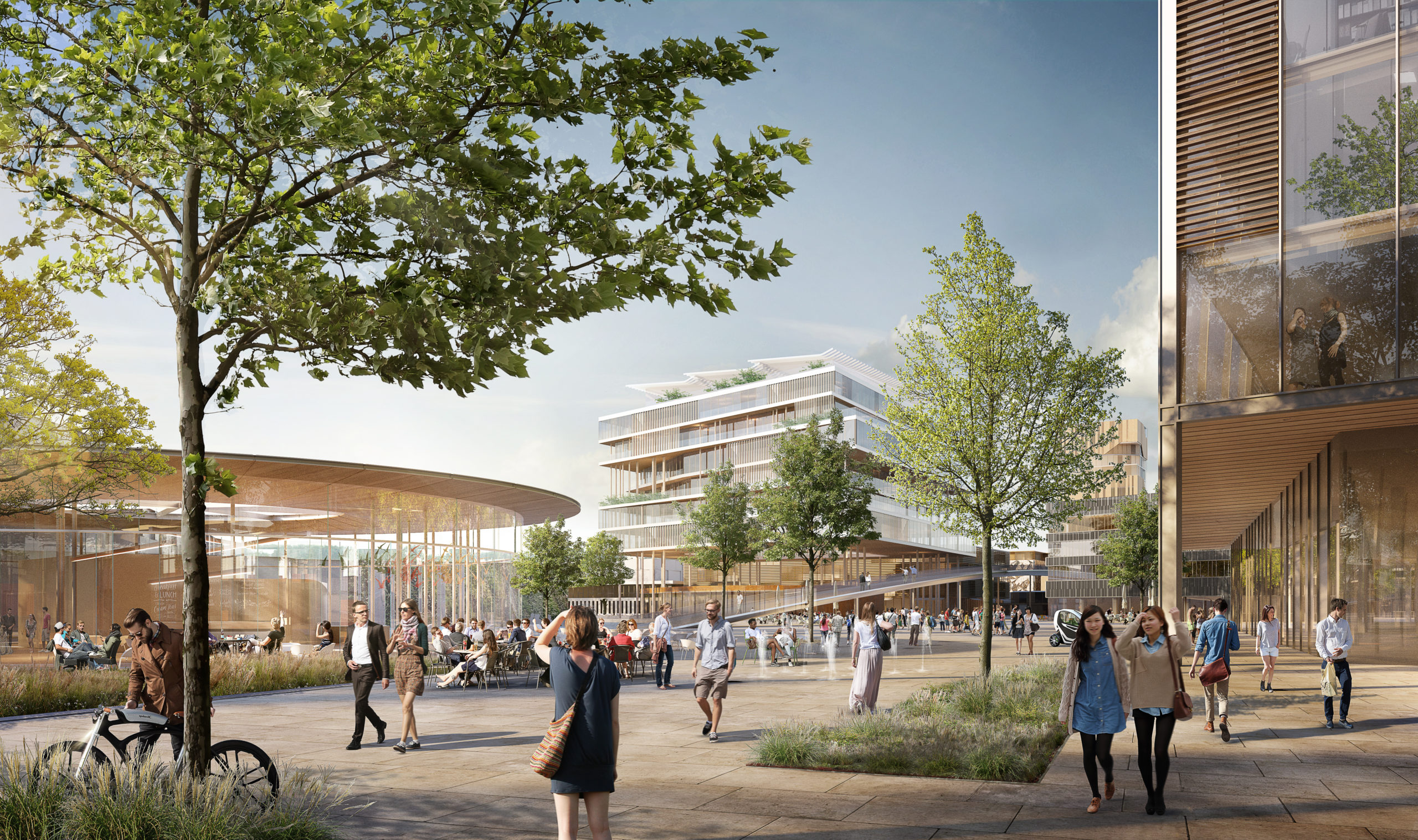
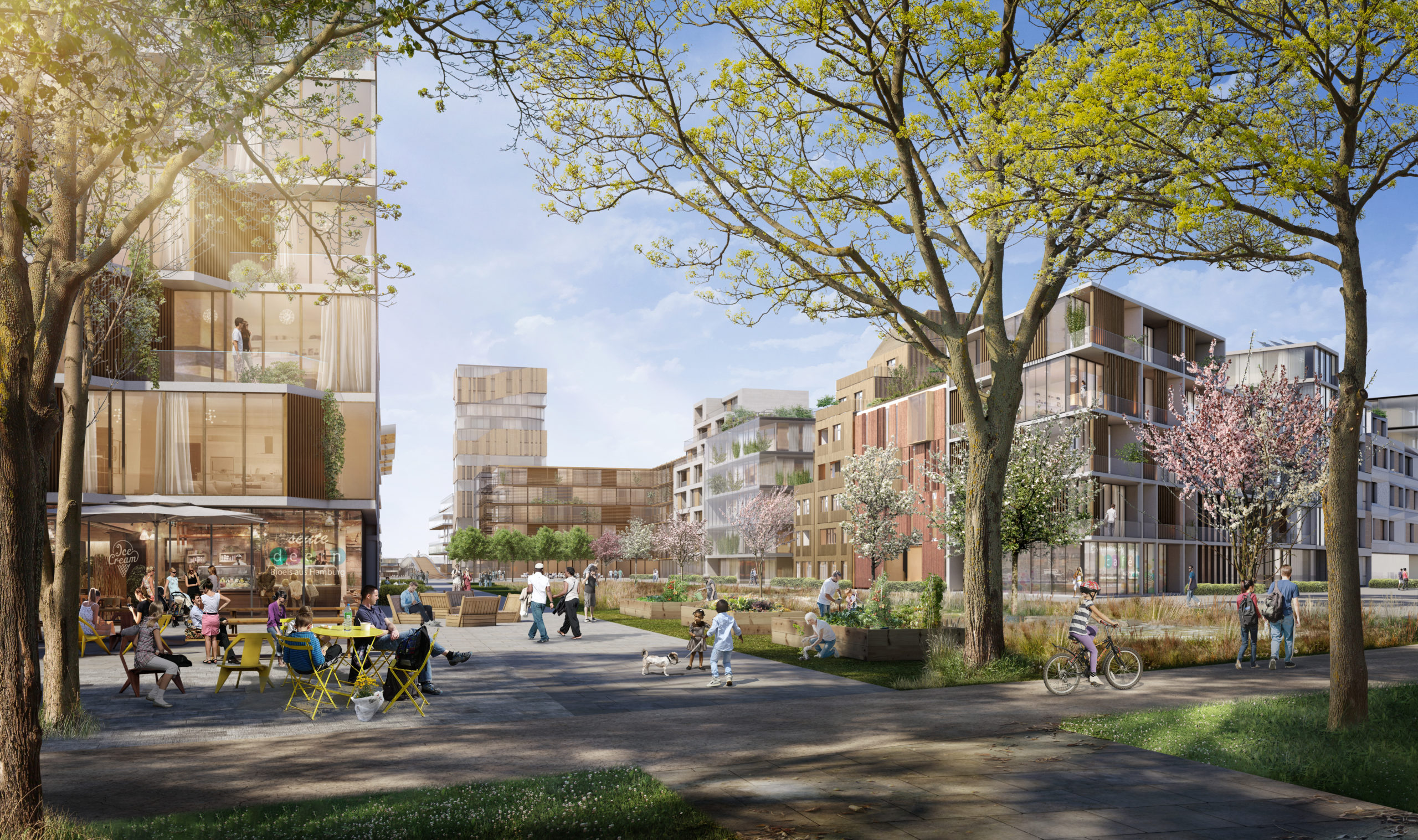
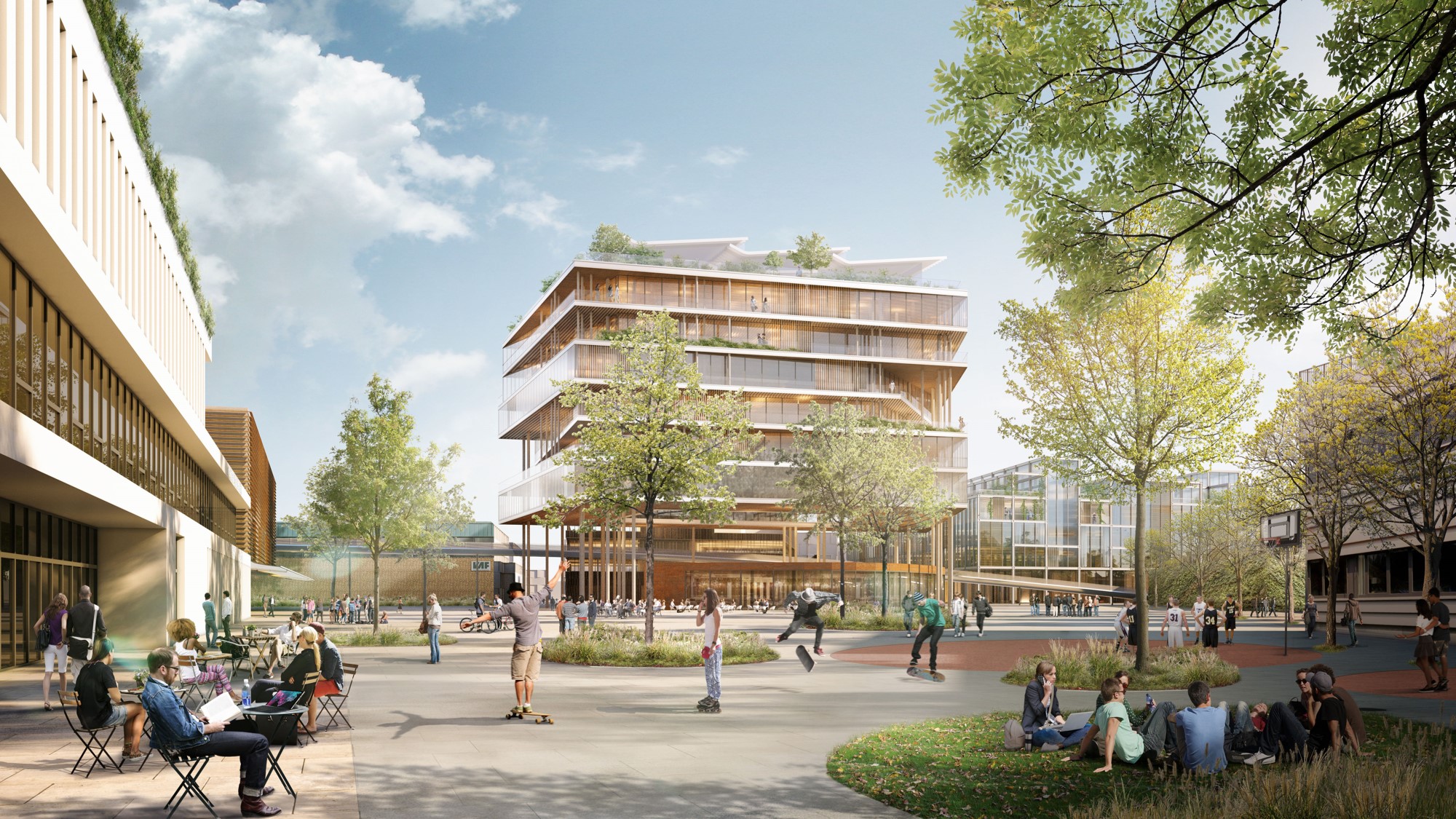
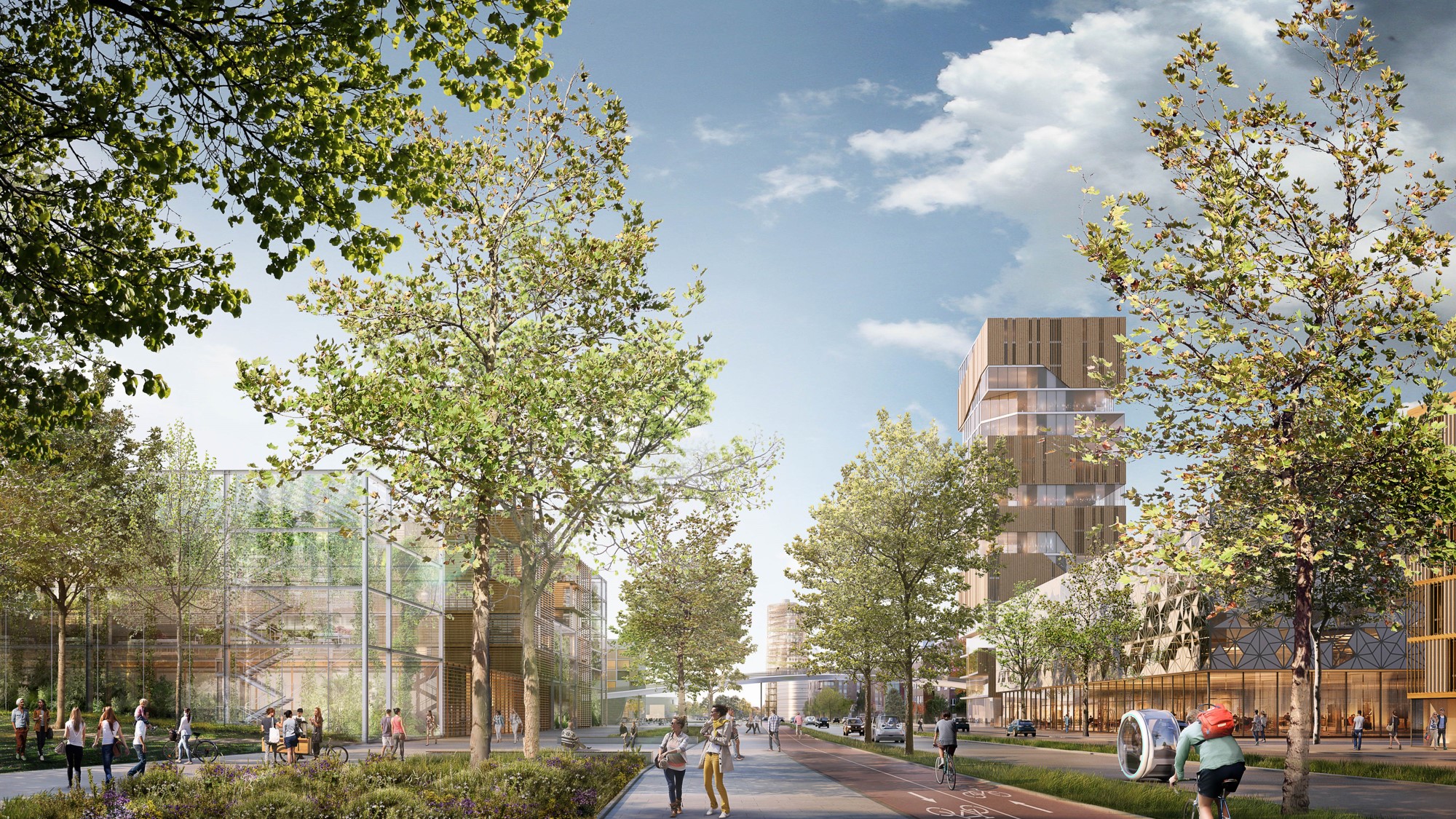
Cooperation and coordination
Science City Hamburg Bahrenfeld GmbH, a wholly owned subsidiary of the city’s HafenCity Hamburg GmbH, is responsible for bringing together the individual development strands and coordinating the responsible parties involved at state and federal level. With the development of HafenCity, Grasbrook and Billebogen, it has many years of experience in implementing new urban districts. At the same time, it is solely responsible for the development of the sub-area Quartiere am Volkspark. The next major development step will be the urban planning and open space planning competition for these very quarters, which will start in 2022/23.
Participants are the Senate Chancellery of the Free and Hanseatic City of Hamburg, the Ministries for Urban Development and Housing (BSW), for Transport and Mobility Change (BVM), for Science, Research, Equality and Districts (BWFGB), for Environment, Climate, Energy and Agriculture (BUKEA) as well as the University of Hamburg, DESY, the business development agency Hamburg Invest, Hamburg’s agency for real estate management and property (LIG) and the Altona District Administration.
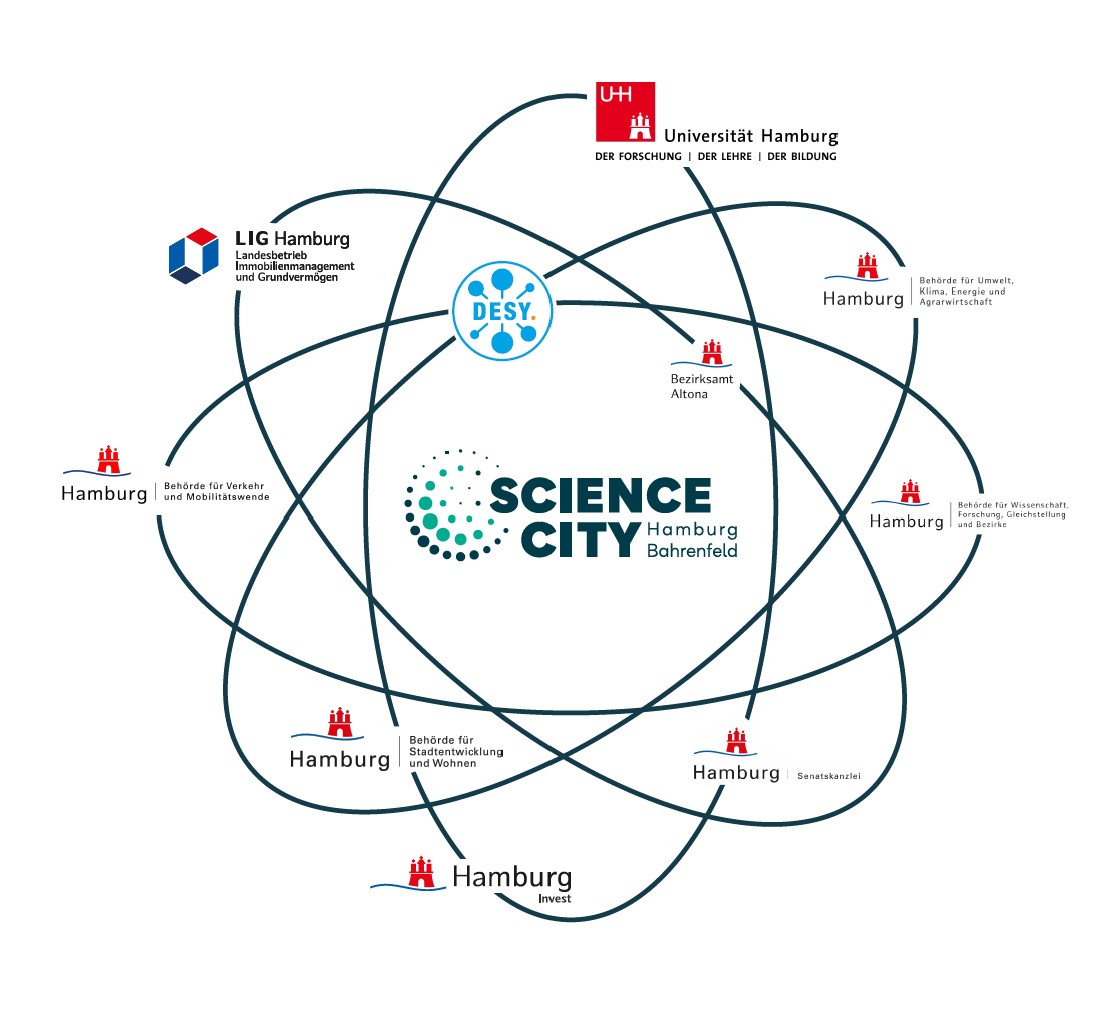
By the 2040s, a new part of Hamburg will thus be created that is much more than the sum of its parts: more than a center for basic research and applied science, more than an incubator for innovation and technology transfer, and more than a diverse residential location. The result will be a knowledge-based urban space that is also a vibrant neighborhood. With attractive housing and recreational spaces, it will be a magnet for students, scientists and creative people from all over the world.
This will be a new part of Hamburg that offers ideal conditions for scientific institutions, start-ups and innovative companies, with laboratories and several thousand workplaces. It will integrate the Volkspark and offer new residential opportunities for the neighborhood, cleverly connecting teaching and research facilities as well as innovative company locations with each other – and thus allowing knowledge to put down roots in the city.
125ha
Total area
3800
Emerging apartments
20years
Development period (approx.)
125ha
Total area
2.500
Emerging apartments
20Jahre
Development period (approx.)
Hamburg University(physics, chemistry and parts of biology)
DESY
3.100
Students
1.200
Teaching
2.700
Employees
3.000
Visiting researchers (annual)
Hamburg University(physics, chemistry and parts of biology)
3.100
Students
1.200
Teaching
DESY
2.700
Employees
3.000
Visiting researchers (annual)
